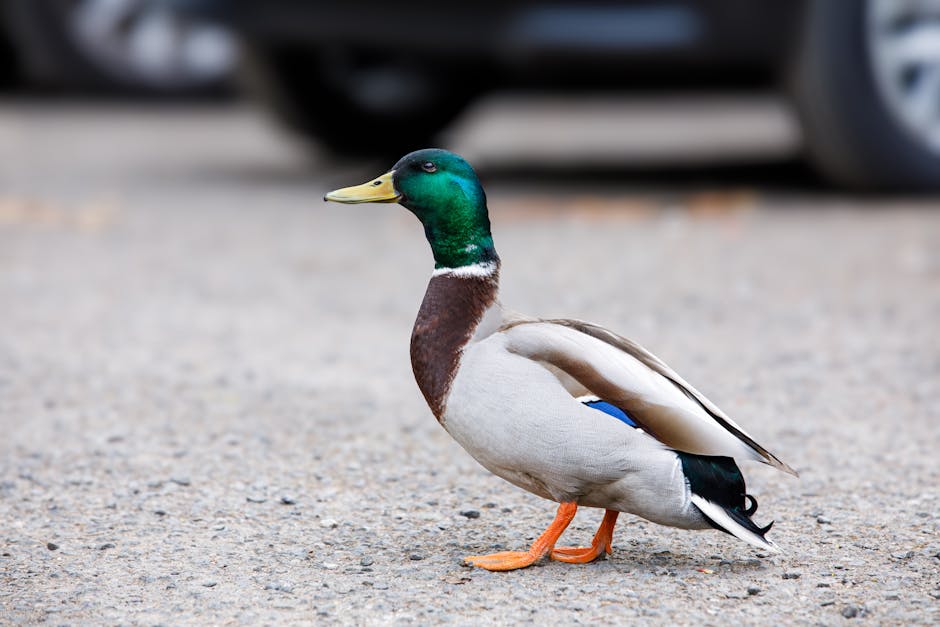Urban Foraging: Discover Nature's Bounty in the City
Urban life presents many challenges, but have you considered that nature’s bounty is often just steps away? Urban foraging, the practice of harvesting wild food in city environments, offers a unique opportunity to connect with nature while significantly reducing food waste. In a world where many people are increasingly conscious about sustainability and environmental impact, urban foraging stands out as an engaging and meaningful practice. Not only does it benefit you by supplementing your diet with fresh, free food, but it also promotes a more sustainable lifestyle through an eco-friendly lens. Let’s explore the vibrant world of urban foraging, providing you with insights, tips, and resources to embark on your green adventure.
What is Urban Foraging?

Urban foraging entails collecting wild edibles from your city’s green spaces, parks, and even sidewalks. This practice bridges the gap between urban living and the natural world, allowing city dwellers to partake in nature's generosity. From dandelion greens to wild garlic and fruit-bearing trees, various edible plants grow in urban environments.
Urban foraging is not just about collecting food—it is a mindset shift. It involves recognizing that food can grow in unexpected places, that our cities can harbor nature, and that by harvesting what is available, we can combat food waste. In fact, according to a report by the Environmental Protection Agency, food waste in the U.S. amounts to approximately 30-40% of the entire food supply. By foraging, you can play a role in reducing this waste.
The Benefits of Urban Foraging

1. Sustainable Food Source

Foraging is an eco-friendly practice that encourages utilizing existing natural resources instead of relying heavily on commercial agricultural systems, which contribute to environmental degradation through practices such as monoculture farming and excessive pesticide use.
Not only does foraging reduce the carbon footprint associated with food transportation, but it also increases local biodiversity. Popular foraged items can range from wild berries and mushrooms to edible flowers and herbs, creating a sustainable and exciting food source.
2. Fresh, Nutritious Ingredients

Many wild edibles are packed with vitamins and minerals that commercial produce may lack. For example, wild greens often have higher concentrations of nutrients than their cultivated counterparts, making them a potent addition to your meals. A study published in the International Journal of Nutritional Sciences found that foraged plants often boast higher antioxidant levels than crops grown through traditional agriculture.
3. Connection to Nature

In the hustle and bustle of city life, it can be easy to forget the beauty and abundance in nature around us. Urban foraging fosters a direct connection between you and your environment, encouraging mindfulness and appreciation for the Earth’s offerings. It’s a way to slow down, explore, and allow nature to inspire.
4. Cost-Efficient

In an era of escalating grocery bills, foraging presents an ingenious solution. The act of harvesting wild food can significantly lessen your grocery expenses while providing a bounty of seasonal delights. As the saying goes, “One man’s weed is another man’s dinner.”
5. Community Building

Urban foraging opens up opportunities to engage with your community. Many cities have foraging groups or workshops where individuals can share their experiences, tips, and even recipes. Forming connections with like-minded neighbors fosters both camaraderie and education.
Starter Guide to Urban Foraging

Know the Rules

Before you set out on your foraging adventure, familiarize yourself with local laws and guidelines. While foraging is often permissible in public parks and green spaces, some areas may prohibit the collection of plants. Moreover, it's crucial to respect nature and foraging ethics, such as not overharvesting and considering sustainability.
Equip Yourself

Having the right tools will make your foraging experience enjoyable. Here’s a quick list of essentials:
- Field Guide: Invest in a reliable plant identification book or an app to confidently identify foraged foods.
- Knapsack or Basket: Use this to collect your finds while keeping them safe and intact.
- Shears or a Knife: Not all plants can be easily pulled from the ground, and a tool helps you avoid damaging the plant or the surrounding environment.
- Gloves: When foraging mushrooms or other potentially thorny plants, gloves protect your hands from abrasion.
Start Small

Begin your foraging journey in familiar locales, perhaps your backyard, nearby park, or community garden. Look for common wild edibles such as:
- Dandelion Greens: They are nutritious and versatile, perfect for salads or as a cooked green.
- Nettles: Rich in vitamins and minerals, nettles can be made into soups or teas.
- Wild Garlic: An excellent seasoning, wild garlic can be a flavorful addition to dishes.
Identify and Harvest with Care

One of the most crucial aspects of foraging is proper identification. Misidentifying a plant can lead to unfortunate consequences. Always double-check using a trusted resource before consuming any wild edibles. For example, the Nutritional Institute recommends using not just one but two sources for plant verification.
When you harvest, ensure that you're doing it sustainably: take only what you need, avoid overharvesting, and leave some plants for wildlife.
Connect with the Community

Embarking on your foraging venture doesn’t have to be a solitary pursuit. Numerous workshops and groups exist where you can learn from seasoned foragers. Websites like Urban Foraging offer insights on beginner-friendly plants and tips on safely enjoying the bounty our cities offer.
Joining local foraging groups or communities enriches your experience as you can share knowledge and learn from others. These connections can extend to discussions about how urban foraging ties into broader sustainable practices, such as eco-friendly gardening and minimizing waste efforts discussed in our blog post on transforming gardens into sustainability hubs.
Seasonal Foraging: What to Look For

Just like grocery shopping, urban foraging is seasonal. Plants vary throughout the year, so let’s break down what to seek in different seasons.
Spring
As the chill of winter fades, it’s time for the first greens of the year:
- Dandelion: These often-derided plants are nutritious, and young leaves are great in salads.
- Garlic Mustard: An invasive species that’s actually edible! It’s a great culinary herb.
Summer
Summer brings a wealth of fruits:
- Blackberries: Commonly found in urban areas, they make for a sweet treat.
- Wild Apples: Explore your local parks for these hidden gems.
Fall
As autumn sets in, look for:
- Mushrooms: Some varieties, such as chanterelles and hen of the woods, thrive in urban woodlands. Always consult an expert before consuming mushrooms to avoid danger.
- Acorns: They can be leached and processed into flour, providing a gluten-free baking option.
Winter
Don’t despair in winter; it’s a great time to forage for certain evergreen plants:
- Pine Needles: Rich in vitamin C, they can be used for teas.
- Holly Berries: While not edible for humans, they’re essential for many garden birds.
Cooking with Foraged Ingredients
Gathering is just the first step; the magic truly happens in the kitchen. Here are some ideas for incorporating your foraged finds into meals:
Salads and Snacks
- Dandelion Greens Salad: Toss fresh dandelion greens with a citrus vinaigrette for a refreshing salad that packs a nutritional punch.
- Wild Garlic Pesto: Blend wild garlic with olive oil, nuts, and cheese for a vibrant, flavorful sauce perfect for pasta or as a dip.
Main Dishes
- Nettle Soup: Steep nettles in stock with potatoes and onions, then blend for a delicious and nutritious soup.
- Baked Stuffed Mushrooms: Harvest edible mushrooms and bake them stuffed with cheese, herbs, and breadcrumbs.
Desserts
- Berry Crumble: Forage blackberries and mix them with oats and honey for a delightful dessert.
- Wildflower Infused Honey: Combine wildflowers with honey for a fragrant sweetener to use in baking.
The versatility of foraged ingredients not only brings excitement to your kitchen but also promotes sustainability by sourcing food locally and reducing reliance on store-bought produce.
Addressing Safety and Responsibility
While urban foraging is enriching, safety must always come first. Here are some pointers:
- Know Your Plants: Only consume plants you can accurately identify, and avoid those that are non-edible or toxic.
- Hazard-Free Spaces: Forage in areas free from pesticides or pollutants. Urban areas can have contaminated soil, especially near roads.
- Communicate with Local Groups: Engage with local community networks familiar with the safest and most fruitful foraging spots.
Making Urban Foraging a Lifestyle
Integrating urban foraging into daily life doesn’t just enhance your diet; it also fosters a deeper commitment to sustainable living.
The more you forage, the more you may find a heightened awareness of ecosystems in urban settings. Over time, as you familiarize yourself with local plants and their habitats, you may also discover methods to utilize your finds in other everyday life aspects, contributing to eco-friendly living.
For instance, practices in sustainable living are often intertwined with foraging principles—both advocate for mindful consideration of our food sources and mindful consumption.
Final Thoughts
Urban foraging presents an incredible opportunity to reconnect with nature in a way that is both sustainable and enriching. By embarking on this journey, you’ll not only gain unique and delicious food options but also cultivate a deeper awareness of your surroundings, promote biodiversity, and contribute to minimizing food waste in your city.
As you take your first steps into the world of foraging, remember to approach it with respect and curiosity. With each plant you identify and harvest, you’re not just sustaining yourself but also deepening your bond with the natural world, enriching your life’s tapestry in unexpected ways.
So grab your basket, familiarize yourself with local rules, and embark on this green adventure. Nature is waiting to share its bounty with you!




